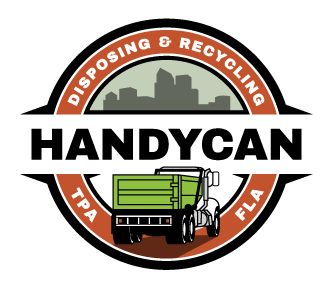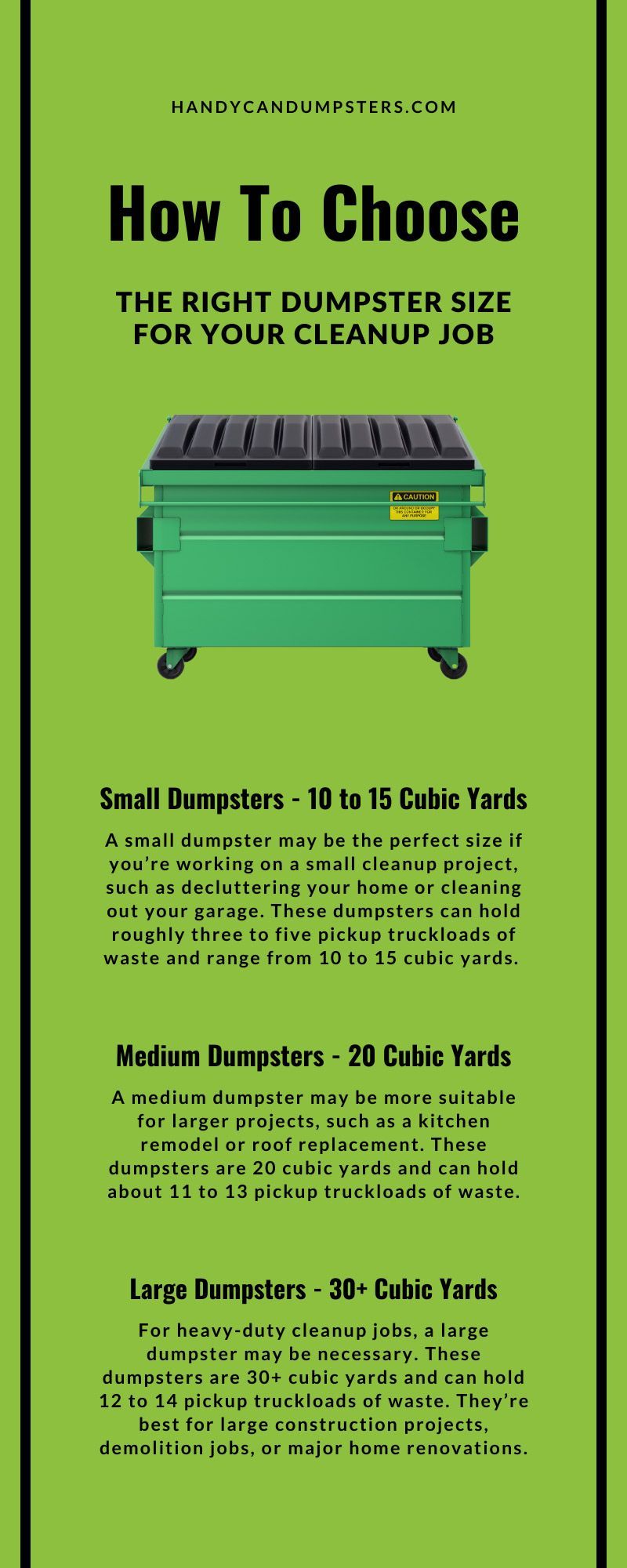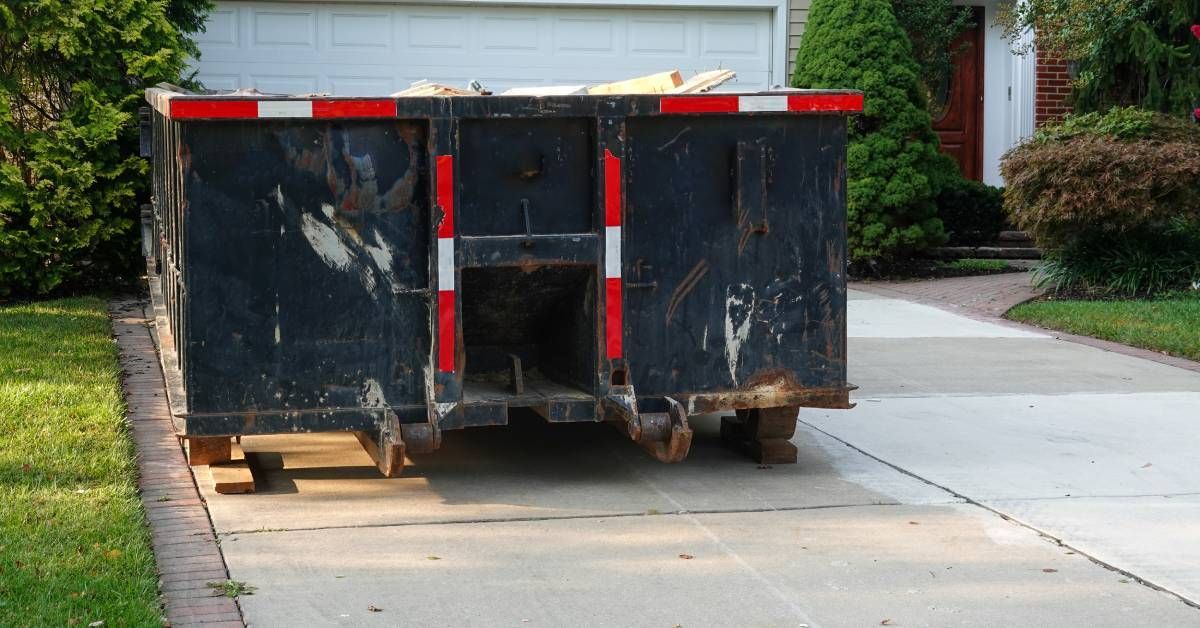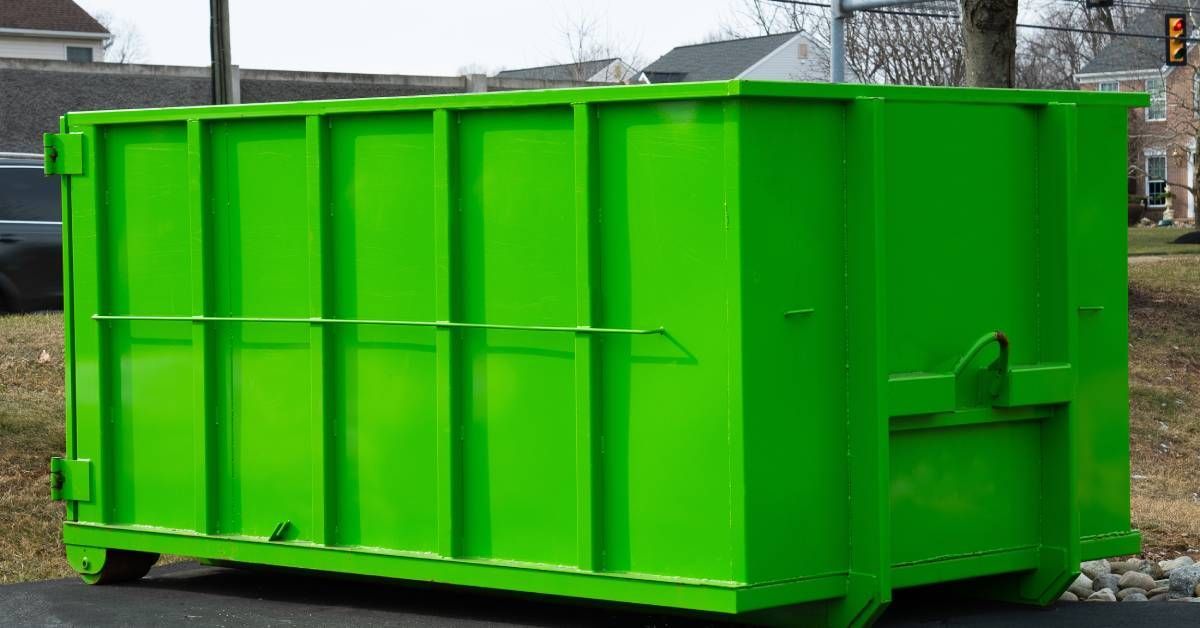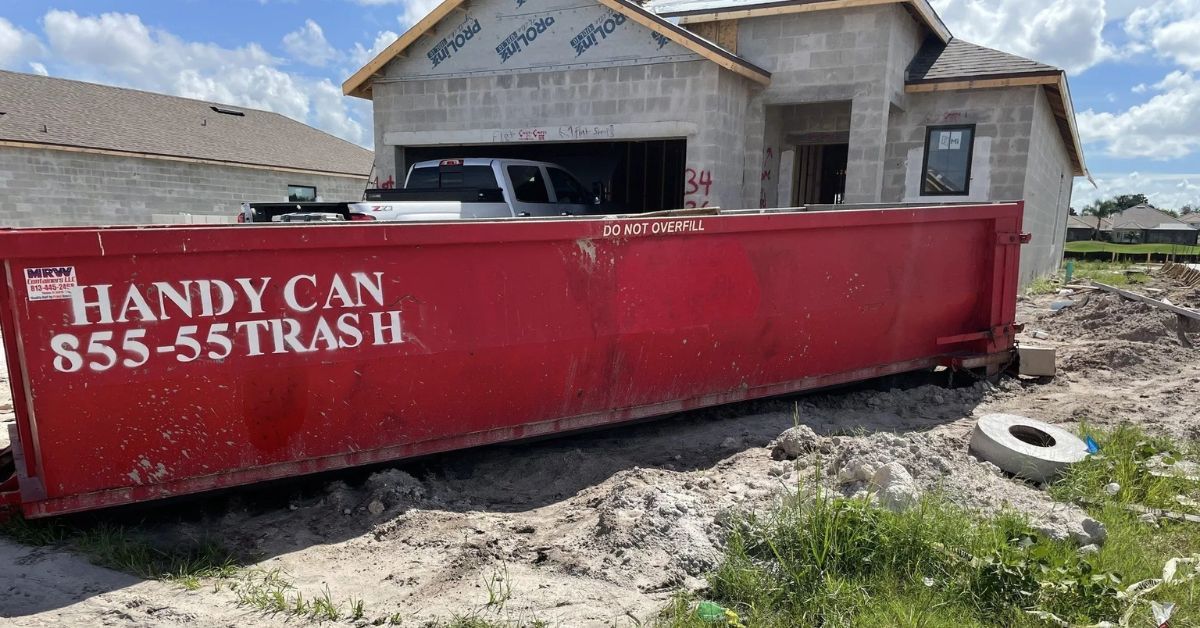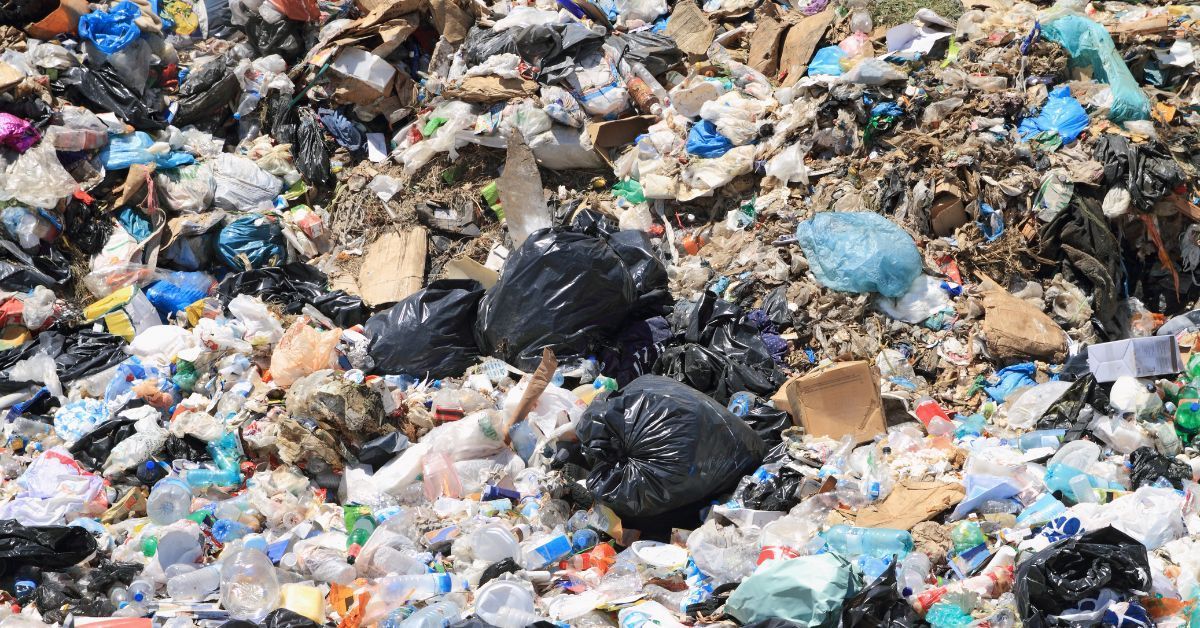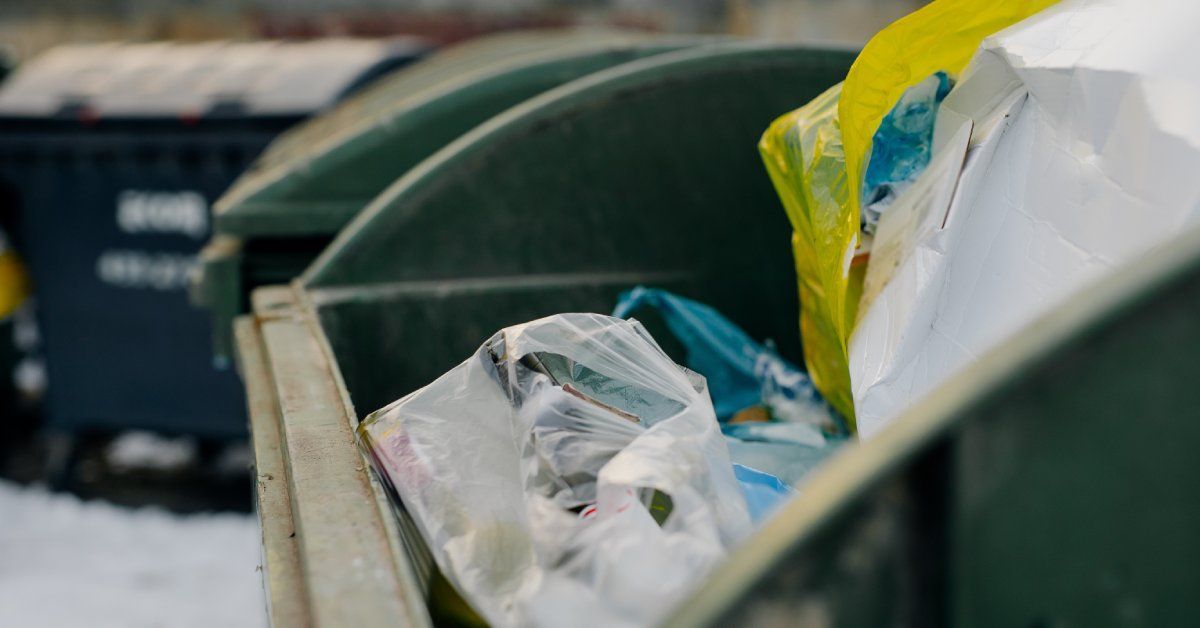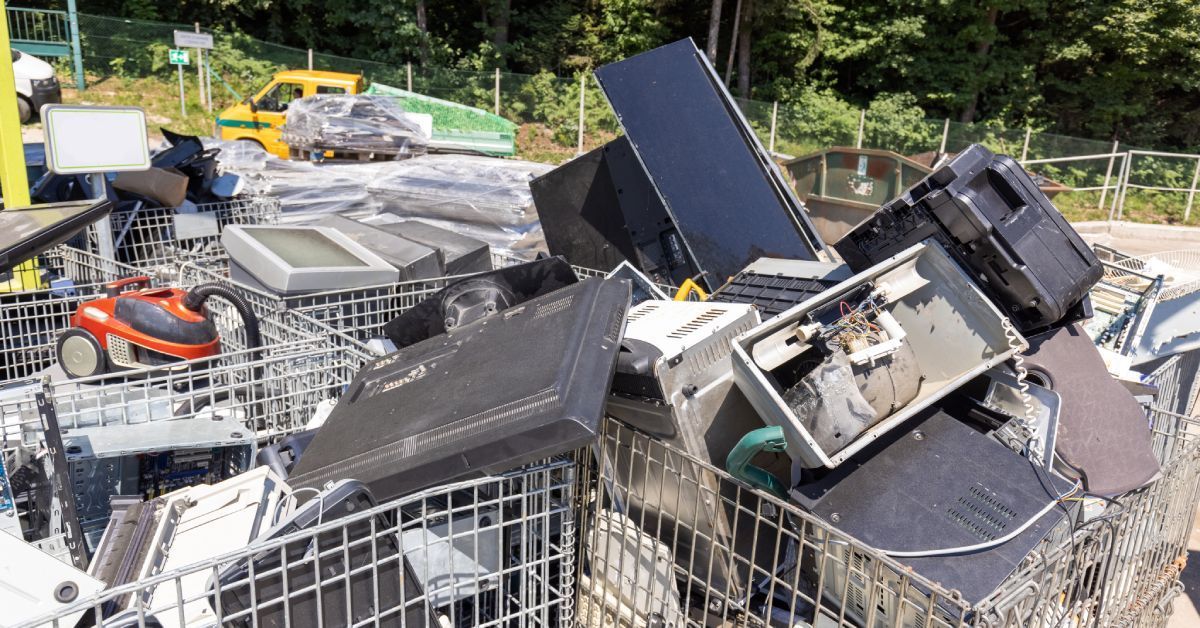How To Choose the Right Dumpster Size for Your Cleanup Job
Dumpsters are ideal in many situations. They’ll save the day and handle the oversized items that won’t fit in a regular garbage bin. When tackling a cleanup job, whether it’s a home renovation, construction project, or landscaping cleanup, one of the most important tasks is finding the right dumpster size.
You want to ensure you have enough space to properly dispose of all your waste without overspending on a larger dumpster than you need. At Handy Can Disposing and Recycling, we understand the importance of choosing the right dumpster size for your cleanup job. Let’s take a closer look at different dumpster sizes and which projects or jobs they’re best for.
Small Dumpsters (10 to 15 Cubic Yards)
A small dumpster may be the perfect size if you’re working on a small cleanup project, such as decluttering your home or cleaning out your garage. These dumpsters can hold roughly three to five pickup truckloads of waste and range from 10 to 15 cubic yards. It’s those jobs where you have too much trash for the garbage bin but don’t want an oversized dumpster sitting in your driveway for weeks.
They’re also great for landscaping projects or small home renovations, such as tearing out a single room or installing new flooring. The compact size of these dumpsters makes them easy to place in a driveway. Handy Can has a strict policy of only arranging the dumpster off the street. You can have the company deliver the dumpster without worrying about driveway space.
Medium Dumpsters (20 Cubic Yards)
A medium dumpster may be more suitable for larger projects, such as a kitchen remodel or roof replacement. These dumpsters are 20 cubic yards and can hold about 11 to 13 pickup truckloads of waste.
Dumpsters have weight limits you’re not allowed to exceed. Choosing a medium-sized dumpster will help you adhere to the weight limit. Roof shingles are heavy and can quickly weigh down the dumpster. That’s why it’s important not to choose a dumpster quickly. You could end up picking one that’s too small for the project.
Medium-sized dumpsters also have higher walls to contain construction debris. You won’t have to worry about larger pieces bouncing or falling out. This dumpster size is ideal for a large home cleanout. If you recently had a kid move out of your house or are moving across the country and need to get rid of many items, a medium-sized dumpster will handle the heavy load.
Large Dumpsters (30+ Cubic Yards)
For heavy-duty cleanup jobs, a large dumpster may be necessary. These dumpsters are 30+ cubic yards and can hold 12 to 14 pickup truckloads of waste. They’re best for large construction projects, demolition jobs, or major home renovations. Any project with large bulk items will require a large dumpster. A big dumpster will easily handle the heavy debris tossed in during the renovation project.
What other project can a large-sized dumpster handle? It’s perfect for:
- Commercial landscaping projects
- New constructions
- Home demolitions
- Tree and debris removal
If you’re unsure about the size of dumpster you need, our Handy Can team can help you determine the right fit for your project. Contact us, and we’ll be happy to assist you in choosing the perfect dumpster size.
Other Factors To Consider
Aside from the size of your project, there are other factors to consider when choosing a dumpster size. These include the type of waste you’ll dispose of and any weight restrictions. For example, if you’re working on a construction project that involves heavy materials, such as concrete or bricks, you may need a larger dumpster with higher weight limits. It’s important not to exceed these.
Make sure you know the time limit for how long you can keep the dumpster. Handy Can understands that construction, renovations, and other projects can go longer than expected. We’ll work with every customer to service the project until it’s over.
Are there any items not allowed in the dumpsters? As a matter of fact, yes. These items include:
- Oil
- Asbestos
- Food waste
- Tires
- Medical waste
- Car batteries
- Stumps
- Industrial drums
Ensure you talk with Handy Can regarding all the items you’re unable to place in the dumpster.
Dumpster Placement
You can’t place a dumpster anywhere on your property. The driveway must be 60 feet long to handle a 10-yard dumpster. No vehicles can block the dumpster. You need to be able to move freely around it. There can’t be any low-hanging branches or other obstacles for the loading and unloading process. The driver requires 23 feet of clearance to position the dumpster correctly.
Why Choose Handy Can Disposing and Recycling?
At Handy Can Disposing and Recycling, we pride ourselves on providing reliable and professional services for all your dumpster needs. Our experienced team can help you determine the right size dumpster and provide timely delivery and pickup to ensure your project runs smoothly.
We proudly serve the West Coast of Florida. It’s our honor to ensure all the residents and business owners have quality construction roll-off dumpsters for every project.
But it doesn’t stop there—we also offer environmentally-friendly recycling options for your waste, ensuring that it goes through proper disposal and doesn’t harm our planet. We’re committed to positively impacting the environment and helping our clients do the same.
Closing Thoughts
Choosing the right dumpster size for your cleanup job is crucial in ensuring a successful and efficient project. Consider the size of your project, type of waste, weight restrictions, and duration when determining which dumpster size is best for you. And remember that Handy Can Disposing and Recycling is here to help every step of the way. Contact us today for all your dumpster needs, and let us make your cleanup job a breeze. So, if you have any type of construction roll-off dumpster work to do, don’t hesitate to reach out to us. We’re here to provide you with the best and most efficient services possible. Let’s work together to keep our environment clean and protect our planet for future generations. So don’t delay any longer; choose Handy Can Disposing and Recycling for all your dumpster needs!

